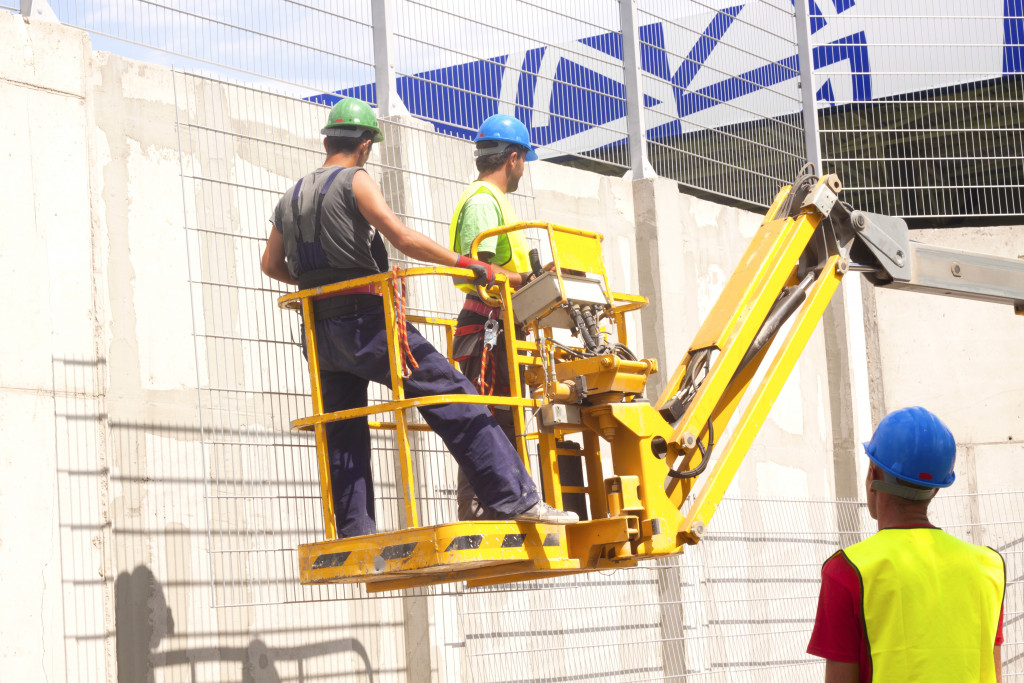The construction industry keeps taking advantage of technology to make site operations and construction management more sustainable and efficient. Several construction industry trends emerged in the past years, including construction robotics, building information modeling (BIM), and the utilization of advanced building materials.
Moreover, the recent pandemic has stimulated the need for new solutions to ensure worker safety. Hence, scaleups and startups started developing innovations around construction robotics, worker safety, and prefabrication. In addition, green building solutions and 3D printing have reduced the adverse effects of construction on the environment.
Here are the top construction trends that will surely stay relevant in 2022.

Building Information Modeling (BIM)
Designing and building planning is a complex process that requires consultation from multiple individuals or companies involved, including builders, architects, engineers, and clients. The traditional method makes it hard for everyone to visualize the changes they want to happen.
As a result, everyone ends up with multiple versions of one plan which commonly leads to confusion. The new BIM tools prevent this unpleasant experience by coming up with a central database. This database enables everyone to share precisely the same model.
Overall, state-of-the-art BIM tools can avoid clashes that usually occur during the first construction phase, improving the overall workflow. Moreover, BIM solutions combined with AR and VR can visualize the project on an absolute scale.
Advanced Building Equipment
Indeed, the construction industry is shifting to green and modular approaches, increasing the demand for advanced materials and equipment to complement the latest construction trends.
The older materials are replaced by sustainable yet innovative materials, such as basalt and 3D printed concrete. The industry also uses materials made from living organisms that are popular with self-healing concrete using bacteria.
Sustainable materials like bioplastics, mycelium composites, and biofoam are also making a name in the construction industry. Construction businesses are constantly innovating and researching more environmentally-friendly materials that offer durability and sustainability.
In addition, the industry also aims to find solutions to promote work efficiency, ensuring the workers, engineers, and everyone on the project site are safe at all times. For instance, workers no longer need to help move heavy construction loads as chain riggings machines can do the job smoothly.
Offsite Construction
Offsite construction is one of the latest trends in the construction industry. Here, manufacturing, designing, and producing building elements can be done in a factory. Traditional construction increases the expenses by delivering extra labor costs and contingency fees. Moreover, onsite construction elevates material waste.
On the other hand, offsite construction offers an immensely innovative solution to these problems. It also provides excellent quality, sustainability, and worker safety. The trend incorporates a wide range of advanced materials, exceptional assembling techniques, ad 3D printing technology.
Construction Robotics
Construction is still one of the most rigorous industries. It involves time-consuming and repetitive tasks which can be performed quickly with automation and robotics. Furthermore, it reduces human-induced mistakes and losses due to exhaustion.
For instance, construction robotics automate welding, painting, rebar trying, bricklaying, and other repetitive tasks with excellent precision. These robotics solutions are also used in automating fleets for excavation, heavy equipment, transportation, concrete works, demolition, and load lifting. The use of this innovation significantly increases worker safety. In general, construction automation reduces labor requirements, expands the overall productivity of workers, and offers adequate protection for hazardous tasks.
Construction Worker Safety
The safety of everyone on the project site remains one of the top priorities of the construction industry. It even became more critical when the world faced the Covid-19 pandemic as the viral breakout increases the risk workers need to deal with.
Modern-day construction strictly adheres to worker safety regulations set by the government. And even though advanced solutions can prevent worker injuries, wearing PPE or personal protective equipment is still vital.
Construction companies nowadays utilize AI algorithms to perfectly predict danger and ensure that their employees take safety measures. VR technology coaches field workers for dangerous tasks with extensive training to lessen the probability of accidents on site. On the other hand, AR technology scans objects to see anything unusual that might harm workers.
Construction Monitoring
Since a construction project involves multiple human resources and assets, monitoring the entire project can be daunting. Many areas in the construction site are not easy to reach by humans but still require optimum inspection. This is why modern construction companies use technology to monitor various construction sites- from underground work to employee exit points.
Advanced inspection and monitoring often use drones combined with thermal sensors. Construction workers are monitored by HD cameras and AI facial recognition technology to increase productivity. Robots can also detect potential failures and committed errors with more accuracy than manual monitoring.
There is no doubt that the construction industry keeps innovating for the better. These are just some of the trends they use, so watch out for the newest ones in the years to come. Indeed, we cannot deny that technology is shaping many industries to create a more advanced world.

